#gemini north telescope
Explore tagged Tumblr posts
Text

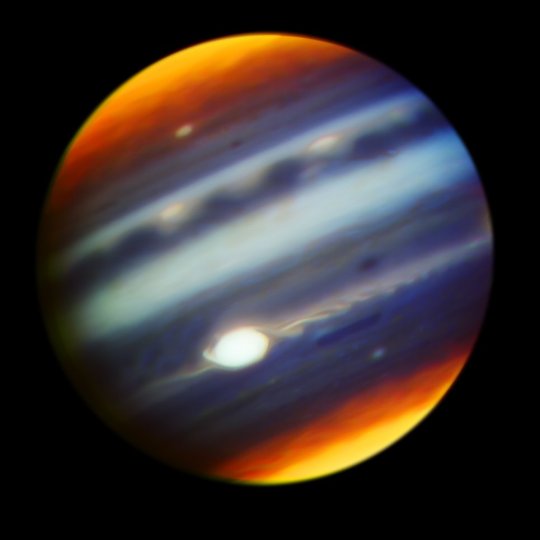

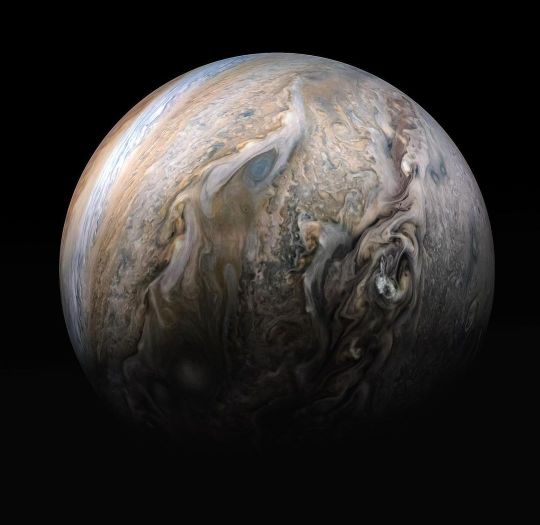
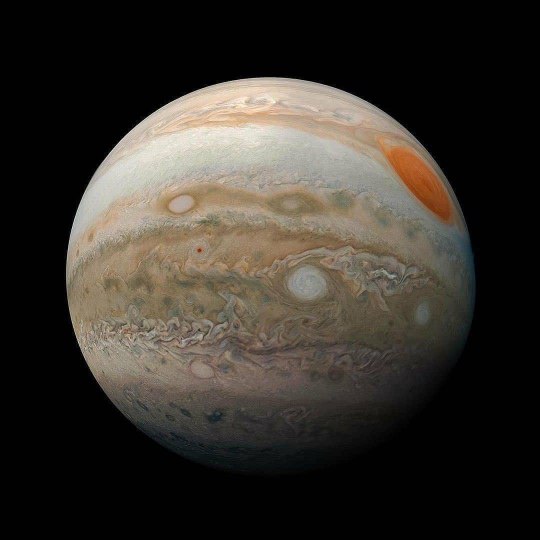
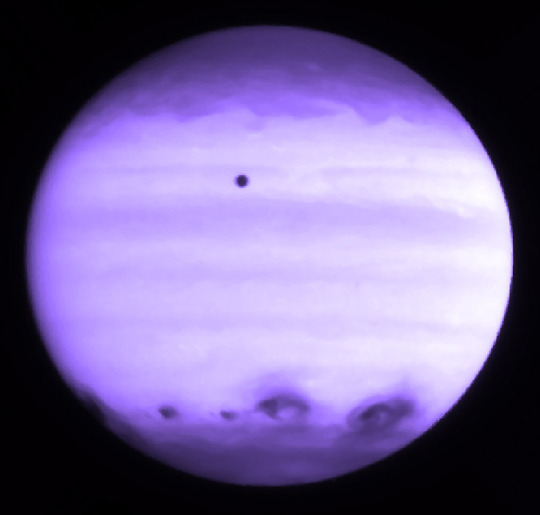
Planet Jupiter © Juno, Gemini North, Hubble
#nasa#jupiter#astrophotography#juno spacecraft#hubble telescope#gemini north telescope#planet#stars#galaxy#universe#space#astronomy#solar system#cosmos#night sky
6K notes
·
View notes
Text
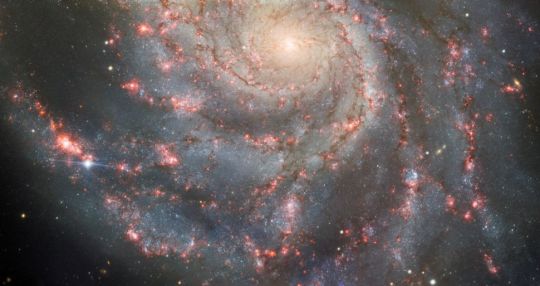
The Gemini North telescope turned its gaze toward the Pinwheel Galaxy, offering a crystal-clear view of a new supernova discovered in May 2023 ♥ https://www.space.com/new-supernova-photo-pinwheel-galaxy-noirlab?
#pinwheel galaxy#pinwheel#galaxy#supernova#Gemini North telescope#space#astronomy#universe#sky#space.com#natural#god's creation#godscreation#beauty#love
2 notes
·
View notes
Text

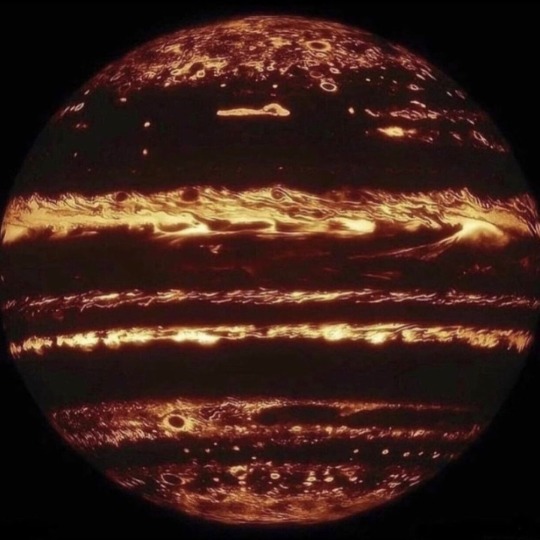
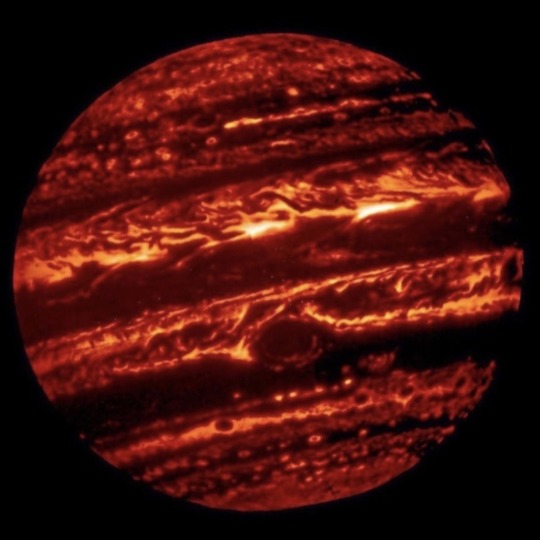
Clearest picture of Jupiter, from Earth. Isn't she beautiful? Actually hundreds of photos taken by the Gemini North Telescope in Hawaii, compiled to produce the infrared snap in order to see beyond Jupiter’s hazy atmosphere.
#aesthetic#jupiter#space#astronomy#astrophotography#w-o-w#photography#tale#gemini#observatory#nasa#planet
14K notes
·
View notes
Text
HOW ARE BLACK HOLES CREATED, AND HOW DO THEY GROW??
Blog#461
Wednesday, December 11th, 2024
Welcome back,
In 2017, astronomers started finding monster black holes in the very early universe. Containing roughly a billion times the mass of our Sun, these black holes were surrounded by disks of infalling matter shining so intensely that we can detect them across immense stretches of space and time.
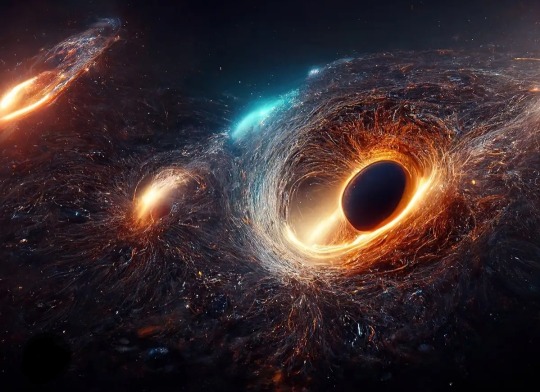
These gravitational giants existed when the universe was only 700 million years old, or 5 percent its current age. At that point in cosmic history, the universe was still a toddler. Gravity was just beginning to rein in clouds of gas and dark matter to form structures that would later evolve into mature spiral and elliptical galaxies. Stars were beginning to pop into being, but they do today.
According to the traditional picture of black hole formation and growth, the universe at this time simply had not existed long enough for black holes to bulk up to a billion solar masses.
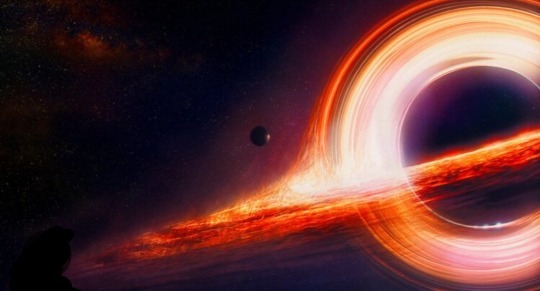
So, based on our general understanding of how black holes form and grow, these black holes should not exist.
And yet they do — posing a major challenge that astrophysicists have yet to unravel.
Quasars are brightly shining beacons of light and energy generated by the accretion of material onto supermassive black holes. In the 1990s, astronomers using a combination of ground- and space-based telescopes started to find extremely distant quasars powered by black holes of a billion or more solar masses.
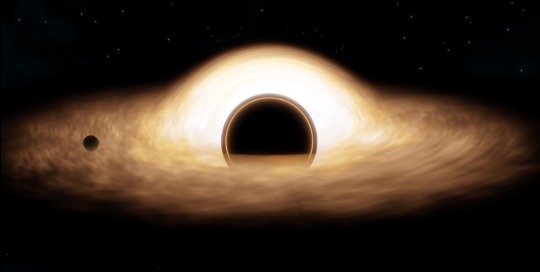
By the mid-2010s, it was no longer a big deal to find quasars dating back to 1 billion or 2 billion years after the Big Bang. But theorists had a difficult time explaining how such massive black holes could have arisen so soon in the universe’s history.
For quasars and other objects that existed many billions of years ago, it’s meaningless to express their distances in terms of light-years. The universe has expanded so much between then and now that astronomers instead refer to an object’s redshift, which is a measurement of how much cosmic expansion has stretched the object’s light toward redder (longer) wavelengths.

For years, astronomers such as the University of Arizona’s Xiaohui Fan have been identifying quasars at redshifts as high as 6, when the universe was about 900 million years old. They’ve even found a few around redshift 7, which corresponds to an era when the universe was about 735 million years old. But in late 2017, an international team led by Eduardo Bañados of the Carnegie Institution for Science announced a quasar at a record-shattering redshift of 7.54. This quasar, designated J1342+0928 (J1342 for short), based on its sky coordinates in Boötes, was radiating 40 trillion Suns’ worth of energy at a time when the universe was only 690 million years old.
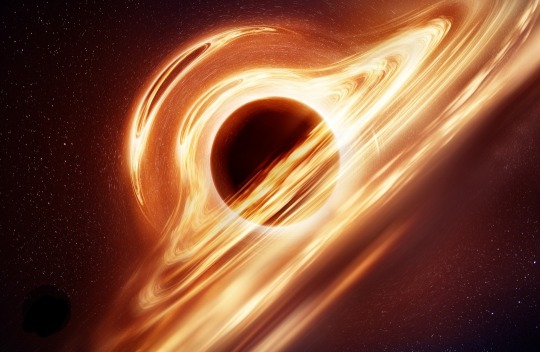
The team found J1342 by mining data from NASA’s Wide-field Infrared Survey Explorer satellite, the United Kingdom Infrared Telescope Deep Sky Survey Large Area Survey, and the DECam Legacy Survey. They used the 6.5-meter Magellan Telescope in Chile to measure the quasar’s redshift, while observations with the 8-meter Gemini North Telescope in Hawaii enabled the team to estimate the black hole’s mass: around 800 million Suns.
Originally published on https://www.astronomy.com
COMING UP!!
(Saturday, December 14th, 2024)
"HOW BIG CAN 'SUPER MASSIVE BLACK HOLES' GET??"
#astronomy#outer space#alternate universe#astrophysics#universe#spacecraft#white universe#space#parallel universe#astrophotography
83 notes
·
View notes
Text

Goddess Venus in Her Chariot Talon Abraxas The Sky This Week from January 17 to 24: A conjunction of Venus and Saturn Sunday, January 19 Venus passes 3° north of Saturn at midnight EST. The pair shine together in the early-evening sky, still 30° high in the southwest an hour after sunset and lingering for several hours, finally setting around 11 P.M. local time.
Venus is much brighter at magnitude –4.6, sitting just to the upper right of 1st-magnitude Saturn. Both are in Aquarius, near that constellation’s border with Pisces and hanging below the Circlet asterism.
Make sure to pull out your telescope and take a look at the two, although you’ll need to do so one at a time. (To see both at once, peer through your telescope’s finder scope or use a pair of binoculars.) Venus’ disk is larger — 27” — and it shows off a crescent phase that is nearly half-lit at 45 percent illuminated. Saturn’s disk, meanwhile, appears just 16” wide due to its greater distance from Earth, although its rings stretch nearly 37” across, bumping its overall size over that of Venus. Those rings are tilted some 3.4° toward us, with the northern side illuminated.
Saturn’s largest and brightest moon, 8th-magnitude Titan, lies a little over 2.5’ east of the planet tonight. But there’s a rarer sight on display: Saturn’s moon Iapetus, now roughly 11th magnitude and about 1’ southwest of the planet. Tomorrow, Iapetus will be less than an arcminute due south of the ringed world, so make sure to come back and take a look then. Sunrise: 7:18 A.M. Sunset: 5:04 P.M. Moonrise: 11:07 P.M. Moonset: 10:14 A.M. Moon Phase: Waning gibbous (69%)
53 notes
·
View notes
Text
Apollo Program: Lunar Module (LM) production and names
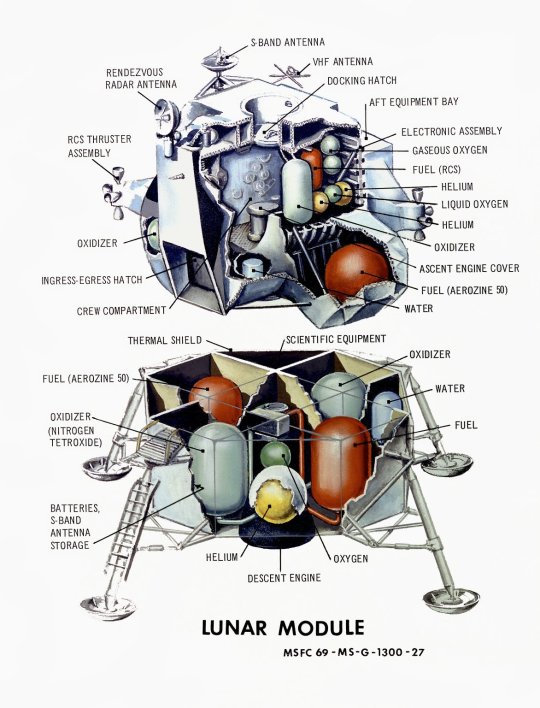
The Grumman Aerospace Corporation was awarded the contract on November 7, 1962. Originally designated Lunar Excursion Module (LEM), NASA ordered 25 lunar modules (10 test articles and 15 production models) for testing and landing on the moon. This was to go with the 15 Saturn Vs and Apollo CSMs. They were assembled in Grumman's factory in Bethpage, New York.
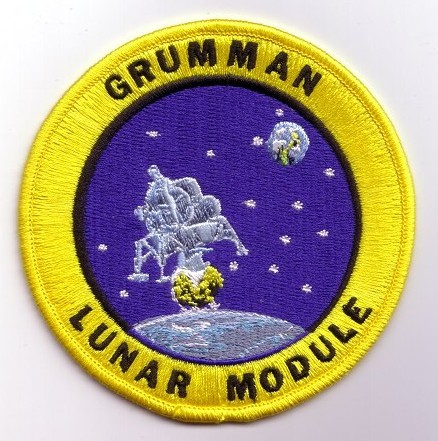

"There were initially four major subcontractors: Bell Aerosystems (ascent engine), Hamilton Standard (environmental control systems), Marquardt (reaction control system) and Rocketdyne (descent engine).
The Primary Guidance, Navigation and Control System (PGNCS) was developed by the MIT Instrumentation Laboratory; the Apollo Guidance Computer was manufactured by Raytheon (a similar guidance system was used in the command module). A backup navigation tool, the Abort Guidance System (AGS), was developed by TRW."
-Information from Wikipedia: link
After the Gemini 3 spacecraft was dubbed Molly Brown by Gus Grissom, NASA forbade naming spacecraft. For Apollo 9, this changed due to mission controllers in Houston needing a way to differentiate between the two spacecraft.
Between 1969 and 1972, Grumman produced a series of insignias for their Lunar Modules which were distributed in limited quantities to their employees in the form of decals and prints.
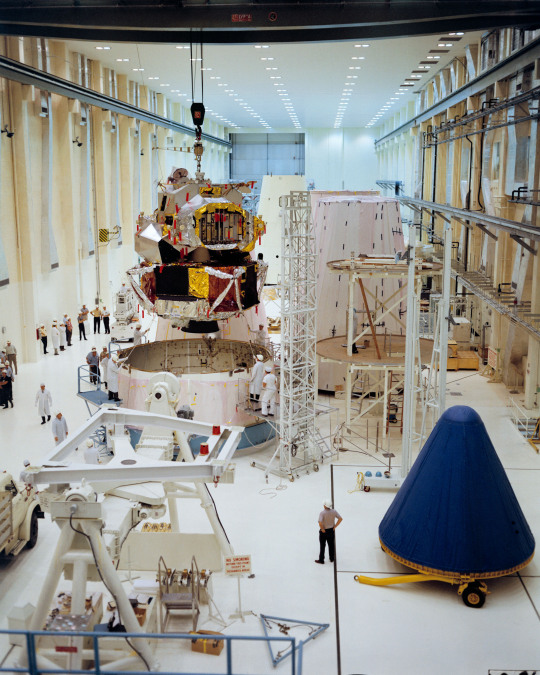
Apollo 5 (LM-1): none

Apollo 3 (and later 2) (LM-2): Never used, intended for a mission similar to Apollo 5. The success of LM-1 led to the cancellation.
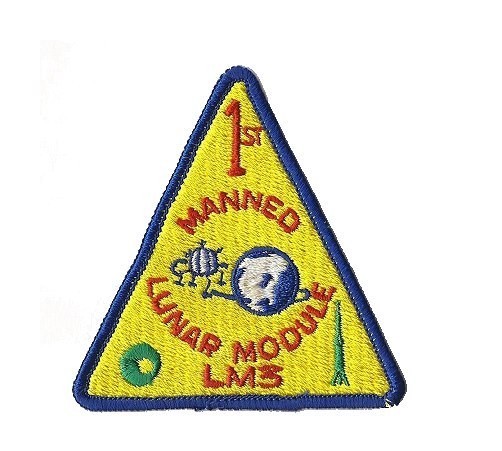
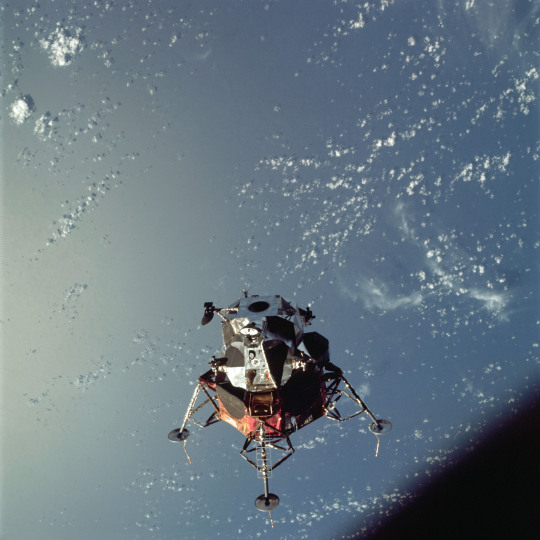
Apollo 9 (LM-3): Spider

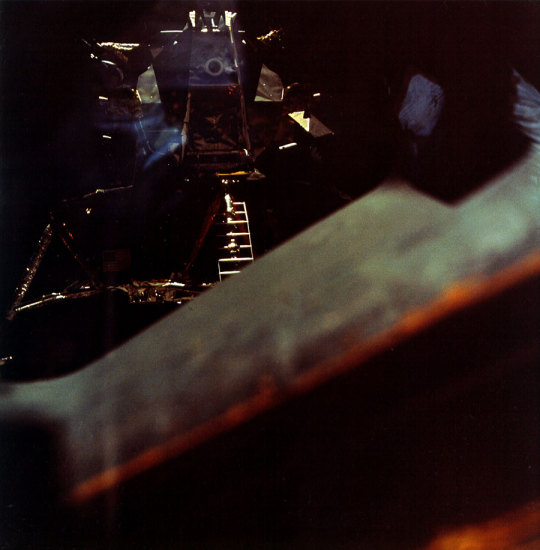
Apollo 10 (LM-4): Snoopy. The LM ascent stage in heliocentric orbit and is the only known one to have survived intact
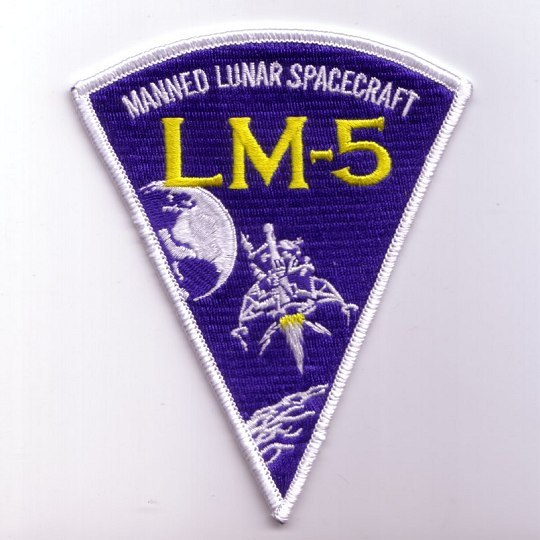
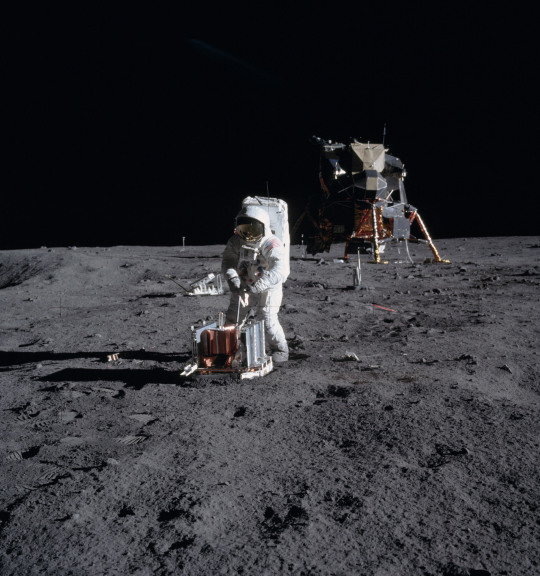
Apollo 11 (LM-5): Eagle (originally named haystack)

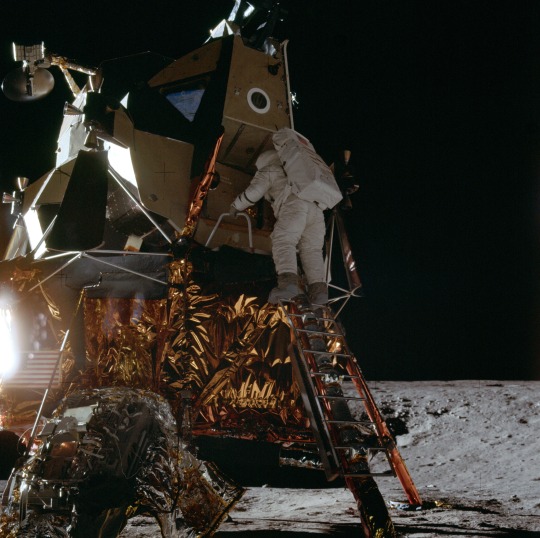
Apollo 12 (LM-6): Intrepid
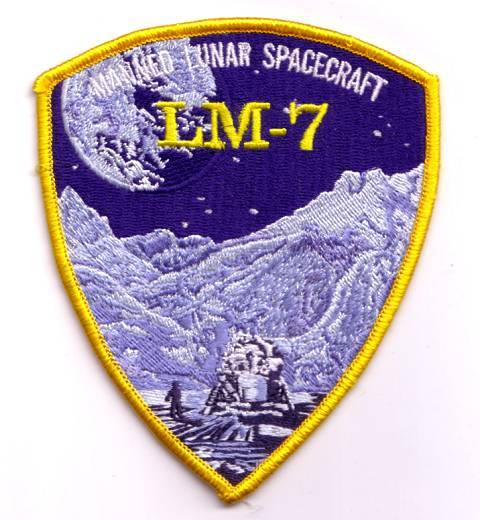
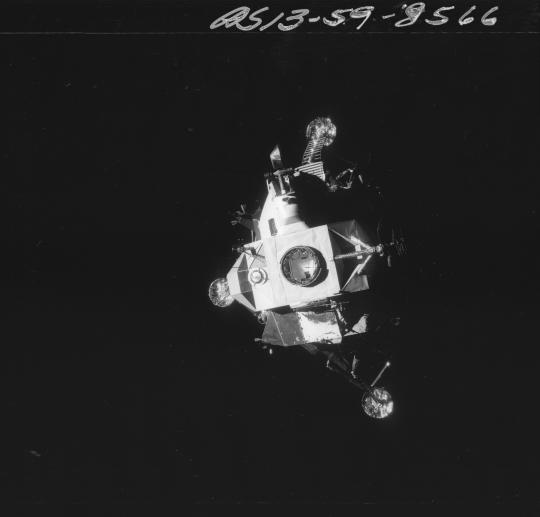
Apollo 13 (LM-7): Aquarius
Humorously, Grumman sent North American (the manufacturer of the Apollo Command and Service Module) a tow bill sometime after the crew returned. North American retorted back saying they've never sent them a tow bill for the previous missions.
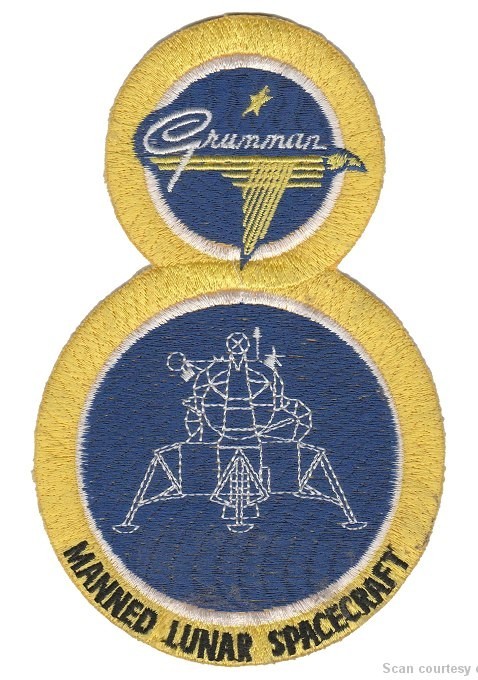

Apollo 14 (LM-8): Antares.
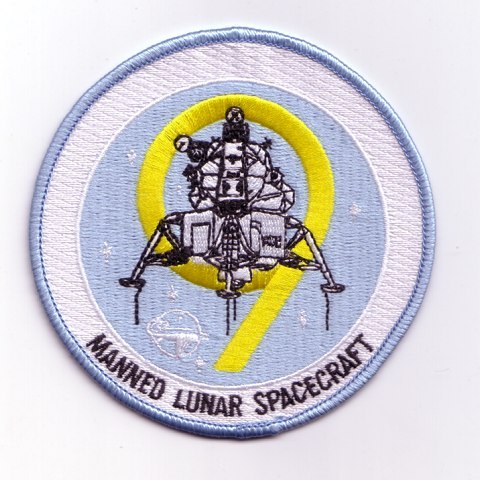
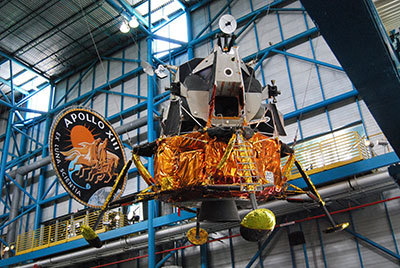
Apollo 15 (originally) (LM-9): never used, on display the Kennedy Space Center.
Intended for Apollo 15 and was the last H-type mission. When Apollo 18 was cancelled, it was decided to make Apollo 15 the first J-type mission.

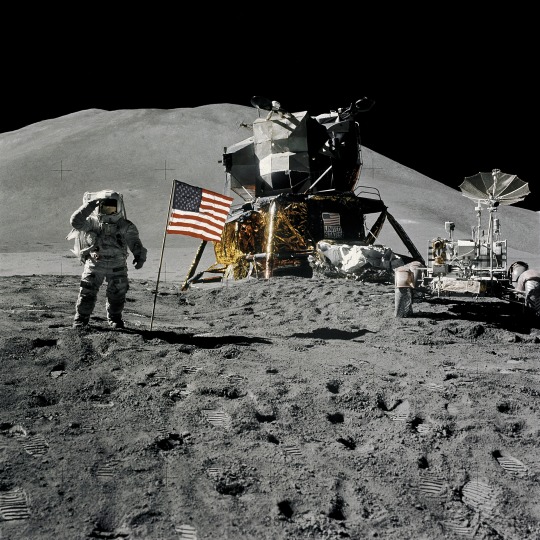
Apollo 15 (LM-10): Falcon, originally intended for Apollo 16. First of the extended stay series.
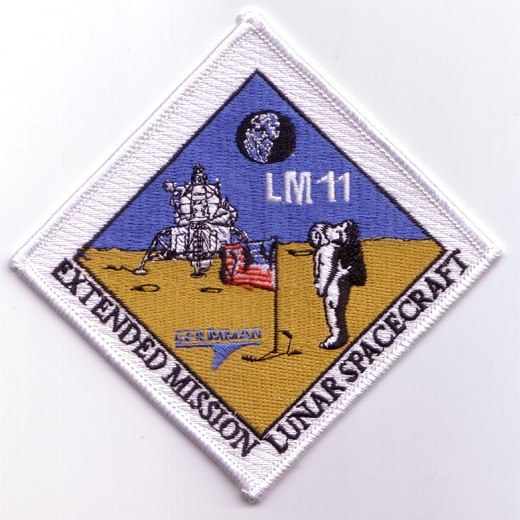

Apollo 16 (LM-11): Orion, originally intended for Apollo 17
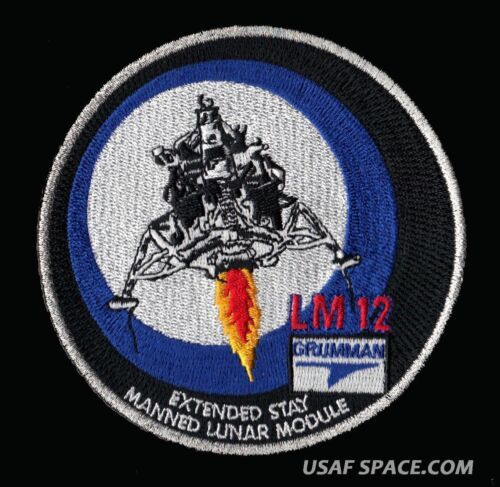

Apollo 17 (LM-12): Challenger, originally intended for Apollo 18.
Note: this name was reused for the second operational Space Shuttle Orbiter. After the Challenger Disaster, NASA officially retired the name.


Apollo 18 (LM-13): never used, originally intended for 19. It was partially completed when Apollo 18 and 19 were cancelled. Later restored by Grumman workers and is on display at the Cradle of Aviation History and Education Center.
Apollo 19 (LM-14): never used, originally intended for Apollo 20. It was partially completed when Apollo 18 and 19 were cancelled. What was completed, was later scrapped.

Apollo 20 (LM-15): never used, partially completed, scrapped. When Apollo 20 was cancelled, it was intended for modification into the Apollo Telescope Mount. Later the Telescope Mount was integrated into Skylab and this dedicated mission was cancelled.
source, source, source, source, source
NASA ID: MSFC-69-MS-G-1300-27, S67-50927, AS09-21-3183, AS10-34-5087, AS11-40-5946, AS12-46-6726, AS13-59-8566, AS14-66-9306, AS15-88-11866, AS16-113-18339, AS17-140-21370
#Lunar Module#Apollo Program#Apollo 5#LM-1#LM-2#Apollo 9#LM-3#Apollo 10#LM-4#Apollo 11#LM-5#Apollo 12#LM-6#Apollo 13#LM-7#Apollo 14#LM-8#LM-9#Apollo 15#LM-10#Apollo 16#LM-11#Apollo 17#LM-12#Apollo 18#LM-13#Apollo 19#LM-14#Apollo 20#LM-15
252 notes
·
View notes
Text

Gemini North Captures Galactic Archipelago Entangled In a Web Of Dark Matter
One century after astronomers proved the existence of galaxies beyond the Milky Way, enormous galaxy clusters are offering clues to today’s cosmic questions
100 years ago Edwin Hubble discovered decisive evidence that other galaxies existed far beyond the Milky Way. This image, captured by the Gemini North telescope, one half of the International Gemini Observatory, features a portion of the enormous Perseus Cluster, showcasing its ‘island Universes’ in awe-inspiring detail. Observations of these objects continue to shed light not only on their individual characteristics, but also on cosmic mysteries such as dark matter.
Among the many views of the Universe that modern telescopes offer, some of the most breathtaking are images like this. Dotted with countless galaxies — each one of incomprehensible size — they make apparent the tremendous scale and richness of the cosmos. Taking center stage here, beguiling in its seeming simplicity, the elliptical galaxy NGC 1270 radiates an ethereal glow into the surrounding darkness. And although it may seem like an island adrift in the deep ocean of space, this object is part of something much larger than itself.
NGC 1270 is just one member of the Perseus Cluster, a group of thousands of galaxies that lies around 240 million light-years from Earth in the constellation Perseus. This image, taken with the Gemini Multi-Object Spectrograph (GMOS) on the Gemini North telescope, one half of the International Gemini Observatory — supported in part by the U.S. National Science Foundation and operated by NSF NOIRLab — captures a dazzling collection of galaxies in the central region of this enormous cluster.
Looking at such a diverse array, shown here in spectacular clarity, it’s astonishing to think that when NGC 1270 was first discovered in 1863 it was not widely accepted that other galaxies even existed. Many of the objects that are now known to be galaxies were initially described as nebulae, owing to their cloudy, amorphous appearance. The idea that they are entities of a similar size to our own Milky Way, or ‘island Universes’ as Immanuel Kant called them, was speculated on by several astronomers throughout history, but was not proven. Instead, many thought they were smaller objects on the outskirts of the Milky Way, which many believed to comprise most or all of the Universe.
The nature of these mysterious objects and the size of the Universe were the subjects of astronomy’s famous Great Debate, held in 1920 between astronomers Heber Curtis and Harlow Shapley. The debate remained unsettled until 1924 when Edwin Hubble, using the Hooker Telescope at Mount Wilson Observatory, observed stars within some of the nebulae to calculate how far they were from Earth. The results were decisive; they were far beyond the Milky Way. Astronomers’ notion of the cosmos underwent a dramatic shift, now populated with innumerable strange, far-off galaxies as large and complex as our own.
As imaging techniques have improved, piercing ever more deeply into space, astronomers have been able to look closer and closer at these ‘island Universes’ to deduce what they might be like. For instance, researchers have observed powerful electromagnetic energy emanating from the heart of NGC 1270, suggesting that it harbors a frantically feeding supermassive black hole. This characteristic is seen in around 10% of galaxies and is detectable via the presence of an accretion disk — an intense vortex of matter swirling around and gradually being devoured by the central black hole.
It’s not only the individual galaxies that astronomers are interested in; hints at many ongoing mysteries lie in their relationship to and interactions with one another. For example, the fact that huge groups like the Perseus Cluster exist at all points to the presence of the enigmatic substance we call dark matter [1]. If there were no such invisible, gravitationally interactive material, then astronomers believe galaxies would be spread more or less evenly across space rather than collecting into densely populated clusters. Current theories suggest that an invisible web of dark matter draws galaxies together at the intersections between its colossal tendrils, where its gravitational pull is strongest.
Although dark matter is invoked to explain observed cosmic structures, the nature of the substance itself remains elusive. As we look at images like this one, and consider the strides made in our understanding over the past century, we can sense a tantalizing hint of just how much more might be discovered in the decades to come. Perhaps hidden in images like this are clues to the next big breakthrough. How much more will we know about our Universe in another century?
Notes
[1] The discovery of dark matter in galaxies is in-part attributed to American astronomer Vera C. Rubin, who used the rotation of galaxies to infer the presence of an invisible, yet gravitationally interactive, material holding them together. She is also the name inspiration for NSF–DOE Vera C. Rubin Observatory, currently under construction in Chile, which will begin operations in 2025.
TOP IMAGE: NGC 1270 is just one member of the Perseus Cluster, a group of thousands of galaxies that lies around 240 million light-years from Earth in the constellation Perseus. This image, taken with the Gemini Multi-Object Spectrograph (GMOS) on the Gemini North telescope, one half of the International Gemini Observatory, which is supported in part by the U.S. National Science Foundation and operated by NSF NOIRLab, captures a dazzling collection of galaxies in the central region of this enormous cluster. Credit: International Gemini Observatory/NOIRLab/NSF/AURA/ Image Processing: J. Miller & M. Rodriguez (International Gemini Observatory/NSF NOIRLab), T.A. Rector (University of Alaska Anchorage/NSF NOIRLab), M. Zamani (NSF NOIRLab) Acknowledgements: PI: Jisu Kang (Seoul National University)
youtube
youtube
youtube
7 notes
·
View notes
Text
Astronomy Picture of the Day
2005 January 25

NGC 6946: The Fireworks Galaxy
Credit & Copyright: T. Rector (U. Alaska Anchorage), Gemini Obs., AURA
Why is this galaxy so active? Nearby spiral galaxy NGC 6946 is undergoing a tremendous burst of star formation with no obvious cause. In many cases spirals light up when interacting with another galaxy, but NGC 6946 appears relatively isolated in space. Located just 10 million light years away toward the constellation of Cepheus, this beautiful face-on spiral spans about 20,000 light years and is seen through a field of foreground stars from our Milky Way Galaxy. The center of NGC 6946 is home to a nuclear starburst itself, and picturesque dark dust is seen lacing the disk along with bright blue stars, red emission nebulas, fast moving gas clouds, and unusually frequent supernovas. The 8-meter Gemini North Telescope in Hawaii, USA, took the above image. A suggested explanation for the high star formation rate is the recent accretion of many primordial low-mass neutral hydrogen clouds from the surrounding region.
Authors & editors: Robert Nemiroff (MTU) & Jerry Bonnell (USRA)
NASA Official: Jay Norris.
A service of: LHEA at NASA / GSFC
& Michigan Tech. U.
3 notes
·
View notes
Text

An article published in the journal "The Astrophysical Journal Letters" reports the discovery of the most distant pair of merging quasars known. A team of researchers combined observations from the Subaru Telescope with the Gemini North Telescope to find traces of this pair of quasars that we see as they were about 900 million years after the Big Bang.
18 notes
·
View notes
Text
Scientists have confirmed the existence of four small, rocky planets orbiting Barnard's Star — the second closest star system to Earth — using a specialized instrument on the mighty Gemini North telescope in Hawaii. Just six light-years away from us, all the worlds are too hot to support life as we know it. ... The innermost planet in the system is planet d (the planets are named in order of discovery, not distance from the star), which has a mass just 26% that of Earth's and orbits Barnard's Star every 2.34 days at a distance of 1.7 million miles (2.8 million kilometers/0.0188 astronomical units). Next up is planet b: the planet first identified in the ESPRESSO data in 2024. This planet has a mass 30% that of Earth's, and orbits its star every 3.15 days at a distance of 2.13 million miles (3.4 million kilometers/0.0229 AU). Planet c is the heavyweight of the bunch, with a mass 33.5% that of Earth's. It orbits Barnard's Star at a distance of 2.55 million miles (4.1 million kilometers/0.0274 AU) and has an orbital period of 4.12 days. The first three planets were confirmed using just the MAROON-X observations. To confirm the fourth planet, e, the MAROON-X data had to be combined with ESPRESSO's measurements to reveal a planet with just 19% of Earth's mass, orbiting Barnard's Star every 6.74 days at a distance of 3.56 million miles (5.7 million kilometers/0.0381 AU). These worlds are incredibly compact in terms of distance to one another, with just 372,820 miles (600,000 kilometers) between planets d and b, and 434,960 miles (700,000 kilometers) between b and c. For comparison, the mean distance between Earth and our moon is just 238,600 miles (384,000 kilometers). Imagine having a planet on our doorstep at just twice that distance! ... A red dwarf like Barnard's Star is very different to our sun, however. It has just 16% of our sun's mass, and 19% its diameter. ... Red dwarfs can also be very volatile, spewing clouds of charged particles and flares of radiation more frequently than our sun does, which could strip nearby worlds of their atmospheres. However, red dwarf activity does decrease with age, and the Barnard's Star system is about 10 billion years old. That said, none of the planets found so far would be habitable to life as we know it anyway, since they are too close and too hot. Instead, the habitable zone around Barnard's Star would coincide with worlds farther out, with orbital periods of between 10 and 42 days. So far, no planets have been found that far out from the star. "With the current dataset, we can confidently rule out any planets more massive than 40 to 60% of Earth's mass near the inner and outer edges of the habitable zone," sBasant said.. "Additionally, we can exclude the presence of Earth-mass planets with orbital periods of up to a few years. We are also confident that the system does not host a gas giant within reasonable distances." MAROON-X was able to gather 112 radial velocity measurements of Barnard's Star throughout the period 2021–2023. Meanwhile, ESPRESSO has recorded 149 radial velocity measurements of the fleet-footed but diminutive star. This isn't enough to completely rule out the possibility of any more small planets that might be lurking in the habitable zone.
More in linked article.
Interesting how small these planets are. Proxima Centauri b also looks not very big (minimum mass 1.07 Earth masses, a lot bigger than the Barnard's Star planets but small compared to most known exoplanets and within the ballpark of Sol system terrestrial planets). Present exoplanet-finding techniques are strongly biased toward big planets with short orbits. I suspect we're getting our first look at the kind of planets red dwarf stars usually have.
6 notes
·
View notes
Text

In this panorama, the Milky Way galaxy curves over the summit of Maunakea in Hawai‘i like an arched gateway to the cosmos. The 8.1-meter Gemini North, one half of the International Gemini Observatory, operated by NSF’s NOIRLab, is visible at the center of the image, and the 3.8-meter United Kingdom Infrared Telescope is to its right. From atop the long-dormant volcano, in the dry air of the Pacific, Gemini North and its neighboring telescopes are superbly located for infrared observations.
The infrared capabilities of Gemini North — and its twin telescope Gemini South in the southern hemisphere — allow astronomers to see through the cosmic dust that blocks visible light from stars and galaxies. They are also optimal for peering into the cold corners of the Universe. Gemini North has detected the potential first traces of the Universe’s earliest stars, confirmed the presence of an ultra-faint fossil galaxy, and detected two black holes within distant merging galaxies.
This photo was taken as part of the recent NOIRLab 2022 Photo Expedition to all the NOIRLab sites.Credit:
International Gemini Observatory/NOIRLab/NSF/AURA/T. Slovinský
8 notes
·
View notes
Text
Rare and mysterious cosmic explosion: Gamma-ray burst or jetted tidal disruption event?
New Post has been published on https://sunalei.org/news/rare-and-mysterious-cosmic-explosion-gamma-ray-burst-or-jetted-tidal-disruption-event/
Rare and mysterious cosmic explosion: Gamma-ray burst or jetted tidal disruption event?

Highly energetic explosions in the sky are commonly attributed to gamma-ray bursts. We now understand that these bursts originate from either the merger of two neutron stars or the collapse of a massive star. In these scenarios, a newborn black hole is formed, emitting a jet that travels at nearly the speed of light. When these jets are directed toward Earth, we can observe them from vast distances — sometimes billions of light-years away — due to a relativistic effect known as Doppler boosting. Over the past decade, thousands of such gamma-ray bursts have been detected.
Since its launch in 2024, the Einstein Probe — an X-ray space telescope developed by the Chinese Academy of Sciences (CAS) in partnership with European Space Agency (ESA) and the Max Planck Institute for Extraterrestrial Physics — has been scanning the skies looking for energetic explosions, and in April the telescope observed an unusual event designated as EP240408A. Now an international team of astronomers, including Dheeraj Pasham from MIT, Igor Andreoni from University of North Carolina at Chapel Hill, and Brendan O’Connor from Carnegie Mellon University, and others have investigated this explosion using a slew of ground-based and space-based telescopes, including NuSTAR, Swift, Gemini, Keck, DECam, VLA, ATCA, and NICER, which was developed in collaboration with MIT.
An open-access report of their findings, published Jan. 27 in The Astrophysical Journal Letters, indicates that the characteristics of this explosion do not match those of typical gamma-ray bursts. Instead, it may represent a rare new class of powerful cosmic explosion — a jetted tidal disruption event, which occurs when a supermassive black hole tears apart a star.
“NICER’s ability to steer to pretty much any part of the sky and monitor for weeks has been instrumental in our understanding of these unusual cosmic explosions,” says Pasham, a research scientist at the MIT Kavli Institute for Astrophysics and Space Research.
While a jetted tidal disruption event is plausible, the researchers say the lack of radio emissions from this jet is puzzling. O’Connor surmises, “EP240408a ticks some of the boxes for several different kinds of phenomena, but it doesn’t tick all the boxes for anything. In particular, the short duration and high luminosity are hard to explain in other scenarios. The alternative is that we are seeing something entirely new!”
According to Pasham, the Einstein Probe is just beginning to scratch the surface of what seems possible. “I’m excited to chase the next weird explosion from the Einstein Probe”, he says, echoing astronomers worldwide who look forward to the prospect of discovering more unusual explosions from the farthest reaches of the cosmos.
0 notes
Text
Rare and mysterious cosmic explosion: Gamma-ray burst or jetted tidal disruption event?
New Post has been published on https://thedigitalinsider.com/rare-and-mysterious-cosmic-explosion-gamma-ray-burst-or-jetted-tidal-disruption-event/
Rare and mysterious cosmic explosion: Gamma-ray burst or jetted tidal disruption event?


Highly energetic explosions in the sky are commonly attributed to gamma-ray bursts. We now understand that these bursts originate from either the merger of two neutron stars or the collapse of a massive star. In these scenarios, a newborn black hole is formed, emitting a jet that travels at nearly the speed of light. When these jets are directed toward Earth, we can observe them from vast distances — sometimes billions of light-years away — due to a relativistic effect known as Doppler boosting. Over the past decade, thousands of such gamma-ray bursts have been detected.
Since its launch in 2024, the Einstein Probe — an X-ray space telescope developed by the Chinese Academy of Sciences (CAS) in partnership with European Space Agency (ESA) and the Max Planck Institute for Extraterrestrial Physics — has been scanning the skies looking for energetic explosions, and in April the telescope observed an unusual event designated as EP240408A. Now an international team of astronomers, including Dheeraj Pasham from MIT, Igor Andreoni from University of North Carolina at Chapel Hill, and Brendan O’Connor from Carnegie Mellon University, and others have investigated this explosion using a slew of ground-based and space-based telescopes, including NuSTAR, Swift, Gemini, Keck, DECam, VLA, ATCA, and NICER, which was developed in collaboration with MIT.
An open-access report of their findings, published Jan. 27 in The Astrophysical Journal Letters, indicates that the characteristics of this explosion do not match those of typical gamma-ray bursts. Instead, it may represent a rare new class of powerful cosmic explosion — a jetted tidal disruption event, which occurs when a supermassive black hole tears apart a star.
“NICER’s ability to steer to pretty much any part of the sky and monitor for weeks has been instrumental in our understanding of these unusual cosmic explosions,” says Pasham, a research scientist at the MIT Kavli Institute for Astrophysics and Space Research.
While a jetted tidal disruption event is plausible, the researchers say the lack of radio emissions from this jet is puzzling. O’Connor surmises, “EP240408a ticks some of the boxes for several different kinds of phenomena, but it doesn’t tick all the boxes for anything. In particular, the short duration and high luminosity are hard to explain in other scenarios. The alternative is that we are seeing something entirely new!”
According to Pasham, the Einstein Probe is just beginning to scratch the surface of what seems possible. “I’m excited to chase the next weird explosion from the Einstein Probe”, he says, echoing astronomers worldwide who look forward to the prospect of discovering more unusual explosions from the farthest reaches of the cosmos.
#2024#Astronomy and astrophysics#Astrophysics#black hole#Black holes#Carnegie Mellon University#CAS#Collaboration#cosmos#disruption#earth#Einstein Probe#Emissions#ESA#European Space Agency#event#explosions#extraterrestrial#Gamma-ray burst#gemini#international team#it#Kavli Institute#Light#luminosity#max#mit#monitor#neutron#neutron stars
0 notes
Text
Are your eyes on the skies.... something is brewing
youtube
It's Black Mother Universe and her Black Alien Posse that looks like so-called African Americans, and Governments are Scared of Her.
Plausible Deniability.
Lots of people from all over the world, regardless if you're ass is White, Black, Brown and Yellow are going to be sent to the "Black Hole."

Astronomers Uncover Black Hole Closer to Earth Than Ever Before
Gemini North Telescope on Hawaii Reveals First Dormant, Stellar–Mass Black Hole
Astronomers have discovered the closest black hole to Earth, the first unambiguous detection of a dormant stellar-mass black hole in the Milky Way. Its close proximity to Earth, a mere 1,600 light-years away, offers an intriguing target of study to advance understanding of the evolution of binary systems.
#youtube#ados#blacklivesmatter#blackvotersmatters#donald trump#joe biden#naacp#blackmediamatters#news#blackvotersmatter
1 note
·
View note
Text

Planetary system found around nearest single star
Gemini North’s MAROON-X instrument finds evidence for four mini-Earth exoplanets around our famous cosmic neighbor Barnard’s Star
For a century, astronomers have been studying Barnard’s Star in the hope of finding planets around it. First discovered by E. E. Barnard at Yerkes Observatory in 1916, it is the nearest single star system to Earth [1]. Barnard’s Star is classified as a red dwarf — low-mass stars that often host closely-packed planetary systems, often with multiple rocky planets. Red dwarfs are extremely numerous in the Universe, so scientists are interested in understanding the environments of the planets they host.
One such effort was led by Jacob Bean from the University of Chicago, whose team created an instrument called MAROON-X, which is designed specifically to search for distant planets around red dwarf stars. MAROON-X is mounted on the Gemini North telescope, one half of the International Gemini Observatory, funded in part by the U.S. National Science Foundation and operated by NSF NOIRLab.
MAROON-X hunts for exoplanets using the radial velocity technique, meaning it detects the subtle back and forth wobble of a star as its exoplanets gravitationally tug on it, which causes the light emitted by the star to shift ever so slightly in wavelength. The powerful instrument measures these small shifts in light so precisely that it can even tease apart the number and masses of the planets that must be circling the star to have the observed effect.
After rigorously calibrating and analyzing data taken during 112 nights over a period of three years, the team found solid evidence for three exoplanets around Barnard’s Star, two of which were previously classified as candidates. The team also combined data from MAROON-X with data from a 2024 study done with the ESPRESSO instrument at the European Southern Observatory’s Very Large Telescope in Chile to confirm the existence of a fourth planet, elevating it as well from candidate to bona fide exoplanet.
“It’s a really exciting find — Barnard’s Star is our cosmic neighbor, and yet we know so little about it,” says Ritvik Basant, PhD student at the University of Chicago and first author of the paper appearing in The Astrophysical Journal Letters. “It’s signaling a breakthrough with the precision of these new instruments from previous generations.”
The newly discovered planets are most likely rocky planets, rather than gas planets like Jupiter. However, this will be difficult to pin down with certainty since, because of the angle we observe them from Earth, the planets do not cross in front of their star, which is the usual method for determining a planet’s composition. But with information from similar planets around other stars, the team will be able to make better estimates of their makeup.
They were, however, able to rule out with a fair degree of certainty the existence of other exoplanets with masses comparable to Earth in Barnard Star’s habitable zone — the region of space around a star that is just right to allow liquid water on an orbiting planet’s surface.
Barnard’s Star has been called the “great white whale” for planet hunters; several times over the past century, groups have announced evidence that suggested planets around Barnard’s Star, only for them to be subsequently disproved. But these latest findings give a much larger degree of confidence than any previous result.
“We observed at different times of night on different days. They’re in Chile; we’re in Hawai‘i. Our teams didn’t coordinate with each other at all,” says Basant. “That gives us a lot of assurance that these aren’t phantoms in the data.”
The four planets, each only about 20 to 30% the mass of Earth, are so close to their home star that they zip all the way around it in a matter of days. The fourth planet is the least massive planet discovered to date using the radial velocity technique. The team hopes this will spark a new era of finding more and more sub-Earth exoplanets in the Universe.
Most rocky planets found so far are much larger than Earth, and they appear to be fairly similar throughout the Milky Way Galaxy. But there are reasons to think that smaller exoplanets have more widely varied compositions. As scientists find more of them, they can begin to tease out more information about how these planets form and what makes them likely to have habitable conditions.
“The U.S. National Science Foundation is collaborating with the astronomy community on an adventure to look deeper into the Universe to detect planets with environments that might resemble Earth's,” says Martin Still, NSF program director for the International Gemini Observatory. “The planet discoveries provided by MAROON-X mounted on Gemini North provide a significant step along that journey.”
MAROON-X is still a visiting instrument at Gemini North. Given its outstanding performance and popularity with the user community, it is in the process of being converted to a permanent facility instrument.
“This result demonstrates the competitive, state-of-the-art capabilities that Gemini offers its user community. The observatory is in the middle of rejuvenating its instrumentation portfolio and MAROON-X is part of the first wave of new instruments, alongside GHOST on Gemini South and IGRINS-2 on Gemini North,” says Andreas Seifahrt, Associate Director of Development for the International Gemini Observatory, co-author of the paper, and member of the team who designed and built MAROON-X.
Notes
[1] The nearest star system to us, Proxima Centauri, has three stars circling each other, which changes the dynamics of planet formation and orbits.
IMAGE: For a century, astronomers have been studying Barnard’s Star in the hope of finding planets around it. First discovered by E. E. Barnard at Yerkes Observatory in 1916, it is the nearest single star system to Earth. Now, using in part the Gemini North telescope, one half of the International Gemini Observatory, partly funded by the U.S. National Science Foundation and operated by NSF NOIRLab, astronomers have discovered four sub-Earth exoplanets orbiting the star. One of the planets is the least massive exoplanet ever discovered using the radial velocity technique, indicating a new benchmark for discovering smaller planets around nearby stars. Credit International Gemini Observatory/NOIRLab/NSF/AURA/P. Marenfeld
3 notes
·
View notes